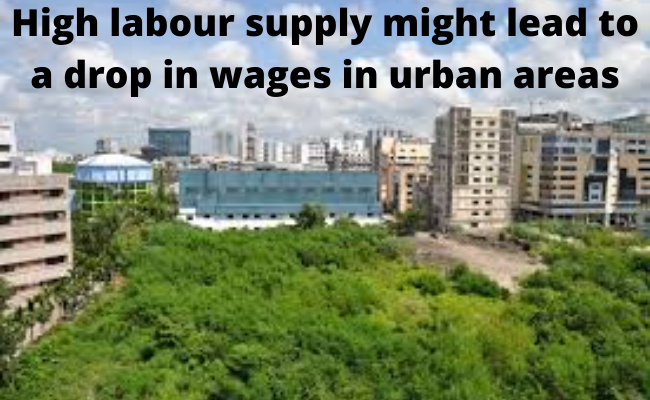
The global health pandemic has been reflecting several challenges in the country. With the number of coronavirus cases on the rise, several other issues are surfacing in the lives of the Indian population.
The underprivileged, as well as the weak sector of the society, has been affected at worse due to the deficiency of employment possibilities and ways of earning.
The people from weaker societal backgrounds have failed to arrange a single meal for themselves and their families. Education, health measures, etc. are beyond their financial capabilities.
Furthermore, a great section of the Indian population is on the verge of collapsing and falling under the poverty line.
There are several factors responsible for these situations; however, the nationwide lockdown and the spread of the virus across every corner of the country has proved fatal in terms of people’s health and country’s economy.
Nevertheless, here is a glimpse at another major issue rising in the rural and urban section of the nation.
As estimated by the CMIE, the high labour supply from different parts of the nation will tend to drop the wages of the workers in the urban sectors. This aspect will inflict and narrow the emerging gap between rural and urban incomes.
The Centre of Monitoring Indian Economy reflected these claims while maintaining the country’s unemployment rates at the same level as the pre-coronavirus digits. The pre-COVID unemployment rate before 28th June was estimated to be at 8.6 % for a week.
The weekly report by the CMIE portrayed that the labour participation rate witnessed a drop from 42% in the previous week to a rate of 41.4% in the last week. Moreover, the rate of unemployment was also dropped from 38.4% to 37.8%.
CMIE suggests that the balance between demand and supply rates determine the wages of the workers. However, the current situation illustrates that the demand rates are much lesser than the labour presence. Therefore, the sole way of clearing the markets would be to decrease the income of the labours.
As per the CMIE, unemployment has been shoving several difficulties for urban labour. Therefore. There is an emerging need for jobs and work in different sectors. The high living costs and poverty rates are comparatively higher in the urban segments than the rural ones.
This was the key reason for migrants shifting back to their hometowns. The CMIE added that the rates of urban wages are 50% more than the rates of rural rates. However, according to the CMIE, this could be narrowing at a rapid speed.
Discussing the weekly data, the CMIE suggested that despite the deterioration of the labours in the past week as compared to the preceding days, the data also reflect upon the chances of improvement of their conditions during April and May.
Analysing the sudden increase in the unemployment rates after the relaxation of lockdown guidelines and rules suggests that participation of the labours in workforces have been recovering. This was witnessed after around 122 million jobs were lost in April due to the outbreak of the pandemic.
Apart from these major details, the CMIE also spoke about the overall rate of unemployment across the country. By 29th June, the unemployment rate of the nation was at 11.1%.
However, according to the CMIE, the 30- day incrementing average of the rural unemployment rate was marked at 10.6% whereas the urban unemployment rate was marked at 12.4% level.
The rates have been improved after the relaxation of the lockdown period as well as the imposition of the rules during day time. For the key aim of providing basic living necessities like food, shelter and clothing, thousands of workers have adopted the path to search for odd jobs.
People claim that the virus extends lesser fear and difficulties than being unable to provide food and shelter to their respective families. Therefore, people have been in search of different jobs and employment possibilities to support themselves and their families during difficult times.
The CMIE also report a weekly update on rural employment improvements and scenarios. The MGNREGA or the Mahatma Gandhi National Rural Employment Guarantee Act, initiative of the Indian government has resulted in massive spending in the rural sections of the nation.
Moreover, this has also resulted in an increase of Kharif sowing in the rural sections of India. The CMIE claimed that there had been no overlapping between them.
The CMIE later added that the two authorities would together determine and power the rural development possibilities across the country. It also added that the approach could attract a section of the urban labour force, though small in proportion as compared to the total of the urban labour presence.
The sudden financial blow to the different sections of the Indian society has forced major stakeholders to take an eminent step in improving the condition of the people as well as the nation. The rates can assist people in determining the condition of the urban and rural spheres.
Post the lockdown period; people must strengthen themselves to face the unexpected challenges proposed by the pandemic-hit nation.
Stay connected with fellow students on PaGaLGuY for CAT Exam 2020 Discussion
Source: The Economic Times
